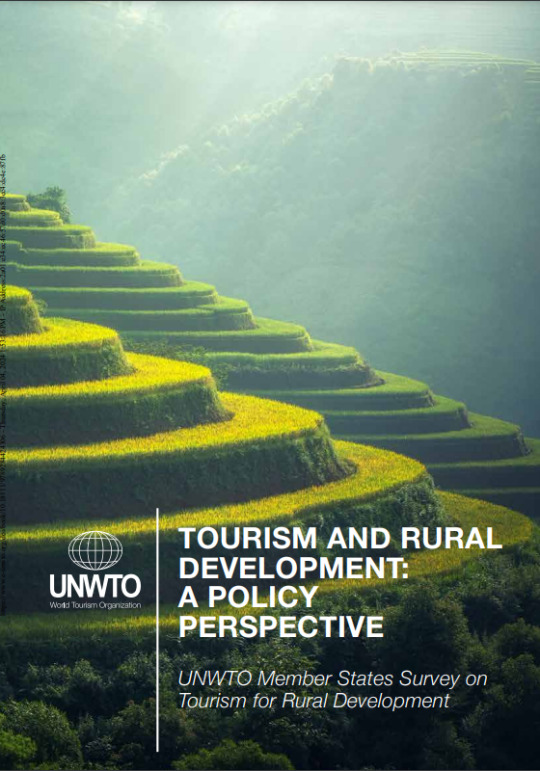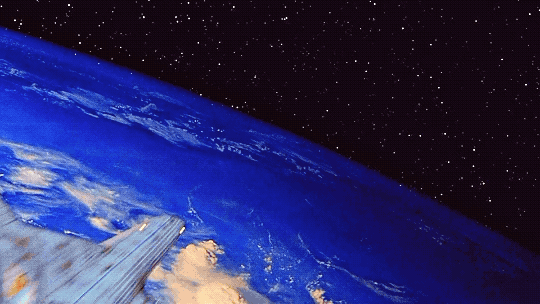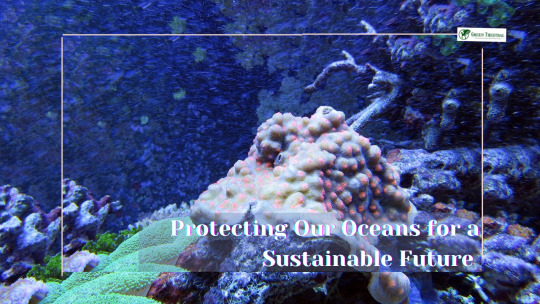#future of tourism
Explore tagged Tumblr posts
Text
Tourism and Rural Development: A Policy Perspective.

Tourism has high potential to stimulate economic growth and social change in rural areas because it contributes to local economies, support other products value chains, distributes benefits across both seasonal and geographic grounds, and promotes the conservation of cultural and natural heritage. Through the UNWTO Tourism for Rural Development Programme, the Organization seeks to enhance these and other opportunities that tourism can bring to rural areas. To devise adequate actions and develop impactful initiatives, it is essential to have solid knowledge and data to help support and monitor the evolution of this important agenda.
#: rural tourism#Tourism policy#support mechanisms#investment#entrepreneurship#good practices#planning#opportunities and challenges#Tourism sector#tourism economy#social cohesion#environmental#cultural exchanges#natural ressources#livelihoods#cultural heritage#tourism infrastructure#connectivity#digitalization#tourism products#tourism prospects#future of tourism#sustainable development goals#unwto#Rural tourism#rural areas#sdgs#globalgoals#sdg1#sdg8
1 note
·
View note
Text



The Fifth Element (1997)
#the fifth element#90s#cult classic#retro futuristic#cyberpunk aesthetic#retrofuture#retro futurism#aesthetic#90s movies#90s aesthetic#cyberpunk#spacecraft#space shuttle#space travel#outer space#space#1990s#scifi#scifi aesthetic#space tourism
1K notes
·
View notes
Text
I apologize for the long ramble in this post, but these are thoughts that I have been trying to express for a while.
I’ve always had a distaste for the travel vloggers (who are usually American) visiting Syria in recent years. These creators often claimed their content was meant to showcase Syria’s beautiful culture and highlight its “recovery from the war.” However, this becomes disingenuous when they completely avoided addressing the war or the oppression Syrians faced—something they couldn’t openly discuss in Syria without jeopardizing their own safety. Many of them filmed just miles away from the destruction caused by the Assad regime or even near torture prisons where the detainees were held. Yet they used vague, whitewashed language to describe the conflict’s devastating toll. Ultimately, their content served to normalize the criminal Assad regime and erase its crimes from public consciousness, painting an inaccurate image of Syria.
For years, countless Syrians couldn’t return to their homeland or reunite with their families. Meanwhile, these vloggers freely visited and filmed in Syria’s streets. When you haven’t been able to return home for over a decade, and wasn’t sure if you ever will return, watching the videos felt like rubbing salt in an open wound. I can’t fully explain the weight of that feeling. What’s more, it often seemed to me like they viewed themselves as “virtuous” for visiting a poor, war-torn country and showcasing its culture, and praising the kindness of its people—as if that justified their tourism.
#I apologize for mistakes I am tired#Syria#That’s not to say I am against tourism.#now without the Assad regime I am sure Syrians would be happy to receive tourists in the future#I am against tourism that is amoral and serves to normalize brutal dictatorships
11 notes
·
View notes
Text

Jupiter - Bringer of Jollity Digital artwork by me, 2022
#art#artists on tumblr#artwork#digitalart#scifi art#scifi#science fiction#space art#space#futurism#future#cruise ship#jupiter#gustav holst#space travel#space tourism#science fiction art#planet art
9 notes
·
View notes
Text
Come visit beautiful sunny Metro Dome City!
YouTube Link
9 notes
·
View notes
Text
this is me arguing with all of you bringing a car into an actual walkable city
#.bullshit ( ooc )#Oh no we’ve unlocked my city planning brain#The tourism board fears me#I would unbork modern Kirkwall if I had to#Honestly this is how I see da5 going years into the future and we have remnants of folks we know and that’s the start
6 notes
·
View notes
Text

historic event (to me)
#happy 1 year anniversary#i sure do like it#(anniversary of me watching it from the beginning... id seen eps here and there as u do)#i remember the night bathroom problem aired a mutual was going bonkers#and i redrew the 'you stupid twink!' 'im a bear!!!! im a bear!!!!!' 'you WISH you were a bear!' scene#and my college roommate tried to show me sunny -- we ended up watching teen wolf instead#im pretty sure he showed me wrestles for the troops but also nightman cometh#i was incredibly confused and didnt like any of it please dont show people wrestles for the troops as a first ep--#was very funny going through for the first time and recognizing the dayman/nightman in dating a [redacted] person#and wondering why there was no play#and then going OHHHHH when i hit the s4 finale#anyway my family and i were on vacation in curacao and we binged like half the show in under a week#like ok we need to get our day trips and tourism out of the way so we can go back and watch more sunny#ada speaks#this is a scheduled post <3 hiii ada of the future (from ada of november 2023)
18 notes
·
View notes
Text
Help needed single mother in turkey is looking for help any amount will be appreciated. Full story click on the link below 👇
#travel#gogetfunding#tourism#please help#send help#xmas#affordable#save life#help#spanish#europe#this is what makes us girls#usa#money#go fund her#daddy's good girl#go fund me#go fund them#adventures#air#black stories#cry for help#mother#future#flowers#needy princess#architecture
3 notes
·
View notes
Text
The amount I'm on pcs is certainly detrimental to the writing process considering its all fictional but sadly thats just the kind of person i am 😭😭 i need environment... and i need the environment to be real as fuck
#and even if its in the future i'll still need environment!!!! and that's how you end up on perth alltrails at 4am. which TO be fair#was the most successful aspect of that particular fic imo#that's also how you end up going through every page of the eschenz tourism webstie AND exhausting its possibilities. lol.#but u didnt hear that from meeee :3
5 notes
·
View notes
Text

#astronaut#girl#space#rootsinthefuture#sci-fi#science fiction#sci fi#future#futuristic#space tourism#spaceship#stable diffusion
8 notes
·
View notes
Text

This resort generates hydro-kinetic energy for 1,000 homes
Located in North-West Scotland, the Tidal Pool Resort is a project by Margot Krasojević Architects that blends coastal tourism with renewable energy production. The space serves as a power plant that utilizes multiple forms of renewable energy sources to produce electricity for the Scottish mainland. Additionally, the project supports the local marine ecosystems to maximize sustainability.



#margot krasojevic architects#coastal tourism#architectural studio#architecture#north-west scotland#tidal pool resort#future architecture
11 notes
·
View notes
Text

wish you were here
5 notes
·
View notes
Text



The Fifth Element (1997)
#the fifth element#90s#cult classic#retro futuristic#cyberpunk aesthetic#retrofuture#retro futurism#aesthetic#90s movies#90s aesthetic#cyberpunk#spacecraft#space shuttle#space travel#outer space#space#1990s#scifi#scifi aesthetic#space tourism
624 notes
·
View notes
Text
#global warming#florida keys#coral bleaching#coral reef#tourism#economy#the future#climate disaster#climate deniers#climate crisis#marine life#ocean
3 notes
·
View notes
Text
Unveiling the Secrets of Life Below Water: Goal 14 for a Sustainable Future

In our journey towards achieving a sustainable future, Goal 14 of the United Nations' Sustainable Development Goals (SDGs) plays a pivotal role. Life Below Water, as it is commonly referred to, focuses on the preservation and sustainable use of oceans, seas, and marine resources. With this goal, the international community aims to safeguard marine ecosystems, mitigate the impacts of human activities, and promote sustainable livelihoods for coastal communities. This article delves into the significance of Goal 14, explores the challenges faced, and highlights the initiatives that can help us ensure a healthier and more vibrant life below water.
Understanding the Importance of Goal 14
The Earth's oceans are vast and cover more than 70% of the planet's surface. They are teeming with life and harbor a remarkable diversity of species and ecosystems. From the mesmerizing coral reefs to the mysterious depths of the abyss, the oceans are a treasure trove of biodiversity, supporting millions of species, including plants, animals, and microorganisms.
Beyond their ecological significance, the oceans play a crucial role in regulating the Earth's climate. They act as a massive heat sink, absorbing a significant amount of the sun's energy and distributing it across the planet. Additionally, oceans play a vital role in the water cycle, facilitating the evaporation of water, which then falls as precipitation and sustains terrestrial ecosystems.
The oceans are not only important for the environment but also for human societies. They provide sustenance to millions of people around the world. Fishing, both for subsistence and commercial purposes, is a primary source of livelihood for coastal communities. The oceans also support economic activities such as tourism, shipping, and offshore industries, contributing significantly to global economies.
However, the delicate balance of marine ecosystems is under threat due to various human activities. Overfishing, driven by unsustainable practices and the demand for seafood, has led to the depletion of fish stocks worldwide. Large-scale industrial fishing, with destructive methods such as bottom trawling, threatens not only the targeted species but also the entire marine food web.
Marine pollution is another significant challenge faced by the oceans. Pollution from land-based sources, including plastic waste, chemicals, oil spills, and agricultural runoff, finds its way into the marine environment, causing severe harm to marine life and ecosystems. The accumulation of plastic debris in the oceans has reached alarming levels, forming giant garbage patches and causing entanglement and ingestion by marine organisms.
Habitat destruction and degradation are also taking a toll on marine ecosystems. Destructive practices such as coral reef destruction, coastal development, and the destruction of mangroves and seagrass beds result in the loss of critical habitats and the disruption of delicate ecological relationships. These habitats serve as nurseries and breeding grounds for many species, and their loss has far-reaching consequences for marine biodiversity.
Furthermore, climate change poses one of the most significant threats to life below water. Rising sea temperatures, ocean acidification, and sea-level rise are already impacting marine ecosystems. Corals, which are vital for the survival of countless marine species, are particularly vulnerable to rising temperatures and increased ocean acidity, leading to coral bleaching events and the degradation of coral reefs.
In recognition of the urgent need to protect and sustainably manage marine resources, Goal 14 of the United Nations' Sustainable Development Goals (SDGs) was established. Also known as Life Below Water, this goal aims to ensure the conservation and sustainable use of the oceans, seas, and marine resources for present and future generations.
Goal 14 encompasses various targets and indicators to guide efforts towards sustainable ocean management. One of the key focuses is the protection and restoration of coral reefs, which are among the most diverse and valuable ecosystems on Earth. Coral reefs provide habitat for numerous species, protect coastlines from erosion, and support vibrant tourism industries. By implementing measures to reduce coral bleaching, enhance reef resilience, and combat destructive practices, Goal 14 seeks to safeguard these vital ecosystems.
Another critical aspect of Goal 14 is the reduction of marine pollution. It calls for the prevention and significant reduction of marine debris, particularly plastic waste. Efforts are being made to promote better waste management systems, recycling and reusing plastics, and raising awareness about the detrimental effects of single-use plastics. Innovative technologies for ocean cleanup are also being developed to tackle existing pollution.
To address the issue of overfishing, Goal 14 emphasizes the need to restore fish stocks to sustainable levels. This involves implementing science-based management plans, combating illegal, unreported, and unregulated fishing, and promoting responsible fishing practices. Creating marine protected areas and adopting ecosystem-based management approaches can help protect critical habitats and ensure the long-term viability of fisheries.
Furthermore, Goal 14 acknowledges the urgent need to address ocean acidification, which poses a grave risk to marine organisms. By reducing carbon dioxide emissions and taking steps to enhance the resilience of marine ecosystems, such as protecting mangroves and seagrass beds, this goal aims to mitigate the impacts of ocean acidification and ensure the survival of vulnerable species.
Achieving Goal 14 requires a collaborative effort from governments, businesses, civil society organizations, and individuals worldwide. International cooperation is crucial to strengthen governance frameworks, regulate resource exploitation, combat illegal fishing, and promote sustainable practices. By taking collective action and embracing sustainable approaches, we can secure a healthier and more vibrant future for life below water.
Challenges and Threats to Life Below Water
The life below water faces a multitude of challenges that require immediate attention and concerted efforts. Overfishing, driven by unsustainable practices and illegal, unreported, and unregulated fishing, has led to a decline in fish stocks worldwide. The loss of biodiversity affects not only marine ecosystems but also the communities that depend on them for food security and economic opportunities.
Marine pollution poses another significant threat. Plastic waste, chemicals, oil spills, and other pollutants contaminate the oceans, harming marine life and ecosystems. The accumulation of plastic debris, in particular, has gained global attention due to its devastating impact on marine organisms and the potential consequences for human health through the food chain.
Ocean acidification, caused by the absorption of excess carbon dioxide from the atmosphere, poses a grave risk to marine organisms such as corals, shellfish, and plankton. Acidic waters can hinder the growth and survival of these organisms, disrupting the entire marine food web and impacting the livelihoods of coastal communities.
Initiatives and Solutions for a Sustainable Life Below Water
Achieving Goal 14 requires a comprehensive approach involving governments, businesses, civil society, and individuals. Several initiatives and solutions have emerged to address the challenges faced by life below water:
Sustainable Fisheries Management: Implementing science-based management plans, promoting responsible fishing practices, and combating illegal fishing are crucial steps towards replenishing fish stocks and ensuring the long-term sustainability of fisheries. Tools like marine protected areas and ecosystem-based management help preserve critical habitats and protect biodiversity.
Marine Pollution Prevention: Reducing plastic pollution and other sources of marine debris is vital. This can be achieved through improved waste management systems, recycling and reusing plastics, and raising awareness about the consequences of single-use plastics. Additionally, promoting the use of biodegradable alternatives and supporting innovative technologies for ocean cleanup can help mitigate the impact of existing pollution.
Climate Change Mitigation and Adaptation: Addressing climate change is fundamental to preserving life below water. Transitioning to renewable energy sources, reducing greenhouse gas emissions, and promoting sustainable coastal development are essential steps in mitigating the impacts of climate change on marine ecosystems. Additionally, enhancing the resilience of coastal communities through measures such as mangrove restoration, coastal protection, and sustainable tourism can aid adaptation efforts.
International Cooperation and Governance: Collaboration among nations is crucial for the effective implementation of Goal 14. Strengthening international frameworks, such as the United Nations Convention on the Law of the Sea (UNCLOS), and promoting regional cooperation can help combat illegal fishing, regulate resource exploitation, and ensure the sustainable use of marine resources.
Conclusion
Preserving life below water is not only crucial for the health of our oceans but also for the overall well-being of our planet. Goal 14 provides a roadmap for sustainable ocean management, aiming to conserve marine biodiversity, mitigate pollution, and promote the sustainable use of marine resources. By taking action at individual, local, and global levels, we can make a significant difference in ensuring a healthier and more vibrant future for life below water. Let us join hands and work together to safeguard the oceans for generations to come.
#Sustainable management of marine resources#Conserving marine biodiversity#Protecting coral reefs and marine ecosystems#Sustainable fishing practices for life below water#Reducing marine pollution for a healthier ocean#Restoring fish stocks for sustainable fisheries#Addressing the threats of overfishing#Combating illegal fishing activities#Preserving the delicate balance of marine ecosystems#Tackling plastic pollution in the oceans#Solutions for ocean acidification#Climate change impact on life below water#Sustainable tourism and the oceans#Promoting responsible coastal development#Achieving United Nations' Goal 14 for a sustainable future#Enhancing resilience of coastal communities#Sustainable livelihoods for coastal populations#Importance of ocean conservation and sustainability#Preserving marine habitats and species diversity#Ecosystem-based management for marine resources#Strengthening international cooperation for Goal 14#Achieving sustainable development through Goal 14#Role of marine protected areas in conservation#Long-term viability of marine ecosystems#Promoting sustainable shipping practices#Economic benefits of sustainable ocean management#Balancing human activities with marine conservation#The significance of Goal 14 in the SDGs#Ensuring a vibrant future for life below water#Global initiatives for the protection of marine environments
2 notes
·
View notes
Text
i'm gonna keep it so real. if this titanic submarine thing were under literally under any other circumstances, i'd feel awful about it, but the longer i look into it the less i can bring myself to really care. these were five rich guys that paid $250,000 to get into a very obviously shottily made death trap and drop themselves to the bottom of the ocean.
like. it's so cartoonishly horrible. what did they expect to happen? how did they think this was going to go? i feel like this should qualify as natural selection.
#like literally if any of them had an ounce of common sense this wouldn't be happening#and don't get me started on how ghoulish the prospect of 'titanic tourism' is 🤢#i feel like we should make everyone with dumbass ideas like this in the future play iron lung and bioshock#the ocean doesn't take kindly to hubris#titanic submarine#over and out there
3 notes
·
View notes